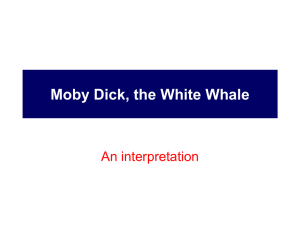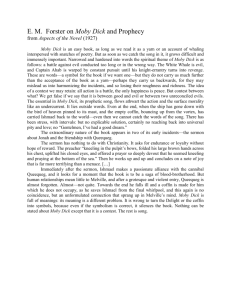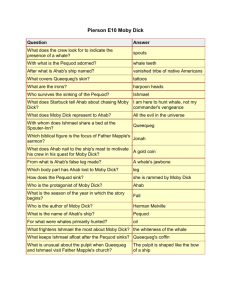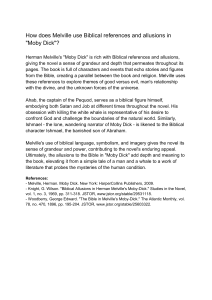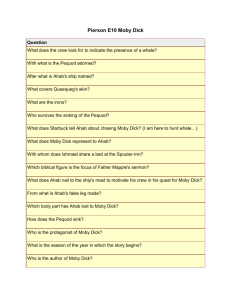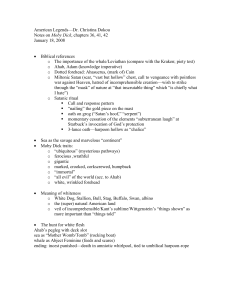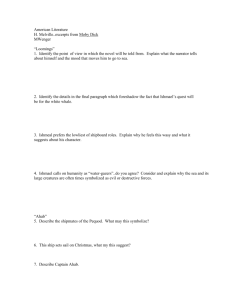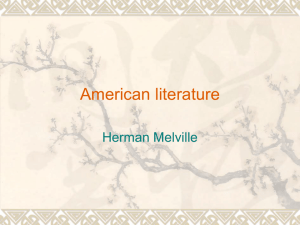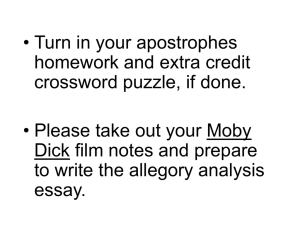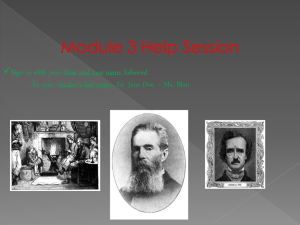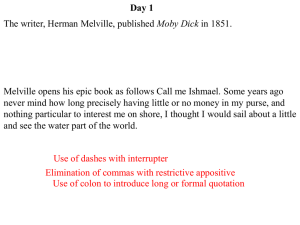Moby Dick.doc - ShyanneMiles
advertisement
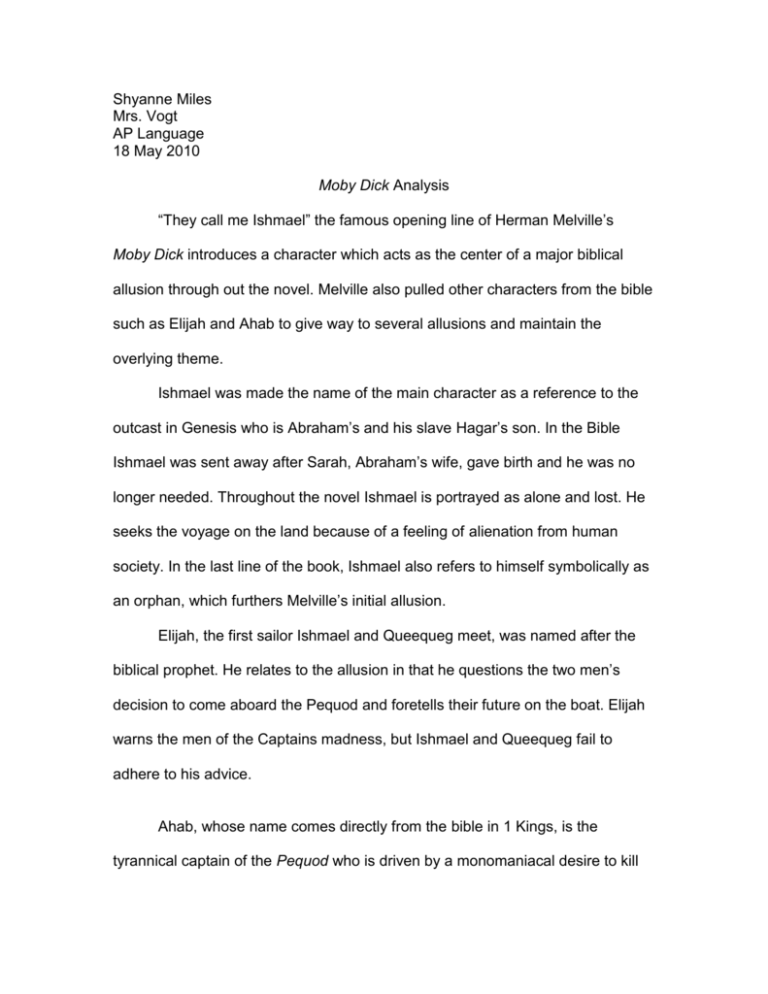
Shyanne Miles Mrs. Vogt AP Language 18 May 2010 Moby Dick Analysis “They call me Ishmael” the famous opening line of Herman Melville’s Moby Dick introduces a character which acts as the center of a major biblical allusion through out the novel. Melville also pulled other characters from the bible such as Elijah and Ahab to give way to several allusions and maintain the overlying theme. Ishmael was made the name of the main character as a reference to the outcast in Genesis who is Abraham’s and his slave Hagar’s son. In the Bible Ishmael was sent away after Sarah, Abraham’s wife, gave birth and he was no longer needed. Throughout the novel Ishmael is portrayed as alone and lost. He seeks the voyage on the land because of a feeling of alienation from human society. In the last line of the book, Ishmael also refers to himself symbolically as an orphan, which furthers Melville’s initial allusion. Elijah, the first sailor Ishmael and Queequeg meet, was named after the biblical prophet. He relates to the allusion in that he questions the two men’s decision to come aboard the Pequod and foretells their future on the boat. Elijah warns the men of the Captains madness, but Ishmael and Queequeg fail to adhere to his advice. Ahab, whose name comes directly from the bible in 1 Kings, is the tyrannical captain of the Pequod who is driven by a monomaniacal desire to kill Moby Dick, the whale that maimed him on the previous whaling voyage. Ahab continues to represent the biblical allusion when he ultimately dooms himself and his ship by his obsession with Moby Dick. During the final chase, Ahab hurls his final harpoon while yelling his now-famous revenge line “... to the last I grapple with thee; from hell's heart I stab at thee; for hate's sake I spit my last breath at thee”. Herman Melville’s Moby Dick maintains a powerful and metaphorical plot through a biblical allusion of not only Ishmael but Elijah and Ahab as well. By reviving characters from the Bible Melville, Melville allowed the novel to have more meaning and correctly produce the point he wanted his audience to see.
